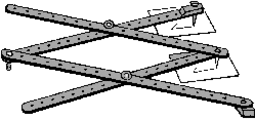xpress_embedo
Advanced Member level 4

Hello!
First of all sorry if i posted this question in wrong section.
My question is that, i have to move a distance (Ultra Sonic) sensor in upward direction and measure the distance vertically.
From various post of internet, i found that this thing is possible with a stepper motor.
But i didn't understand what assembly i need to do that and how to connect them.
(I found some terms like Threaded Rod and Nut , but i am confused regarding which part i shall buy)
Please suggest me the parts and ways to connect them to meet the purpose and from where i can purchase this thing.
(I am from India, Amazon India will work perfectly for me)
Thanks in Advance.
First of all sorry if i posted this question in wrong section.
My question is that, i have to move a distance (Ultra Sonic) sensor in upward direction and measure the distance vertically.
From various post of internet, i found that this thing is possible with a stepper motor.
But i didn't understand what assembly i need to do that and how to connect them.
(I found some terms like Threaded Rod and Nut , but i am confused regarding which part i shall buy)
Please suggest me the parts and ways to connect them to meet the purpose and from where i can purchase this thing.
(I am from India, Amazon India will work perfectly for me)
Thanks in Advance.

